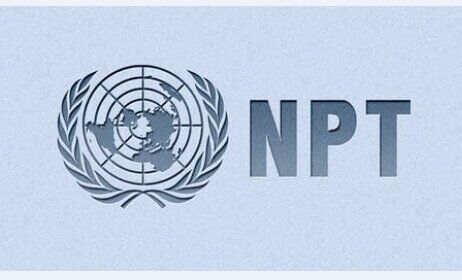Nuclear Non-Proliferation Treaty (NPT)

1. What is the NPT?
-
The Treaty on the Non-Proliferation of Nuclear Weapons (NPT) is an international treaty aimed at:
-
Preventing the spread of nuclear weapons and related technology.
-
Promoting peaceful uses of nuclear energy.
-
Advancing nuclear disarmament and eventual elimination of nuclear arsenals.
-
2. Timeline & Global Acceptance
-
Negotiated: 1965–1968 by the UN-sponsored Eighteen Nation Committee on Disarmament (Geneva).
-
Opened for signature: 1968
-
Entered into force: 1970
-
Extended indefinitely: 1995 Review Conference
-
Parties as of 2016: 191 states (most widely adhered to arms control treaty)
3. Key Provisions ("Three Pillars")
Although not explicitly stated in the treaty, NPT is understood to rest on three interlinked pillars:
| Pillar | Explanation |
|---|---|
| Non-Proliferation | Non-nuclear-weapon states (NNWS) will not acquire nuclear weapons. |
| Disarmament | Nuclear-weapon states (NWS) will pursue disarmament in good faith. |
| Peaceful Use | All parties have the right to access nuclear technology for peaceful purposes. |
4. Nuclear-Weapon States (NWS) Recognized by NPT
Defined as those who tested nuclear devices before 1 January 1967:
-
U.S. (1945), Russia (1949), U.K. (1952), France (1960), China (1964)
Other nuclear-armed states outside NPT:
-
India, Pakistan, North Korea (withdrew in 2003), Israel (ambiguous stance)
5. Iran and the NPT
-
Iran is an original signatory (1968) and ratified the NPT in 1970.
-
Classified as a Non-Nuclear Weapon State (NNWS):
-
Cannot build nuclear weapons.
-
Must permit IAEA inspections for transparency.
-
-
Iran asserts its right to enrich uranium for peaceful purposes under the treaty.
-
The IAEA Additional Protocol and Nuclear Suppliers Group (NSG) controls help monitor compliance and restrict proliferation.
6. Issues and Criticism
-
Disarmament concerns: Authorized NWS still maintain approx. 13,400 warheads.
-
Proliferation risks: Critics say NPT hasn’t stopped some nations from using civilian nuclear programs to develop weapons capability.
-
Inequity: Some argue NPT entrenches nuclear power inequality between NWS and NNWS.
-
Enforcement limitations: UN and IAEA have limited enforcement powers to prevent misuse of nuclear material.
7. Institutional Mechanisms
-
Review Conferences: Held every 5 years to evaluate progress and discuss reforms.
-
Export Controls: Managed through the Nuclear Suppliers Group (NSG).
-
Verification Measures: Handled by the IAEA, including enhanced protocols for compliance.
